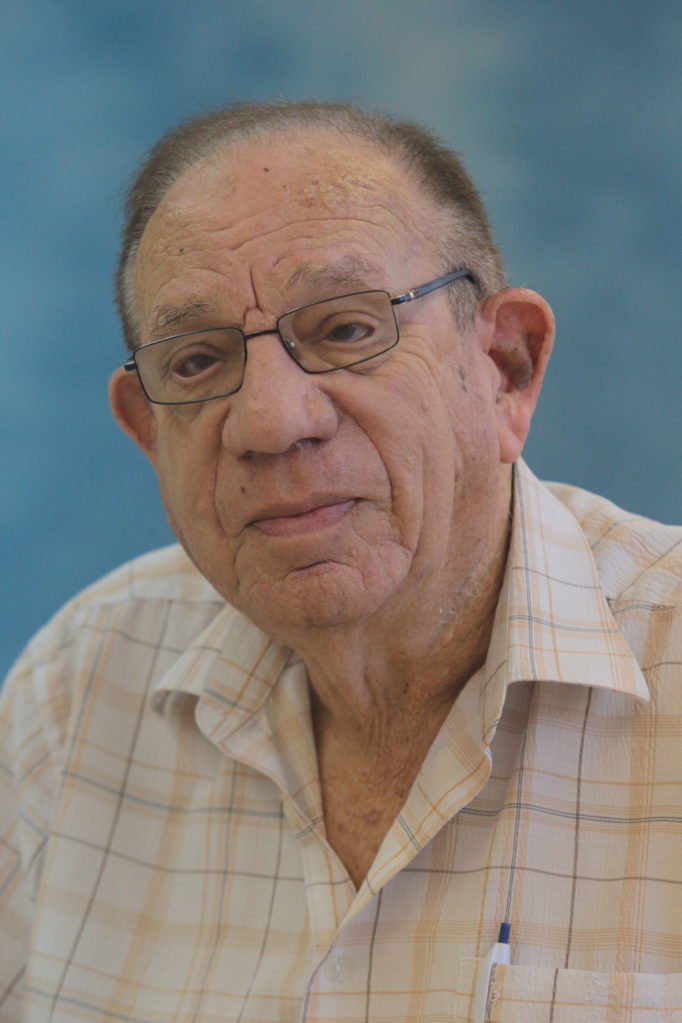Moshe Narkis
Personal Info
Gen. Yaakov Dori Chair in Engineering 1992-04 D.Sc. 1966, Technion-Israel Institute of Technology 2001 SPE Research Award 2002 Paul J. Flory Polymer Research Prize 2003 Fellow of PMSE-ACSResearch Fields
Surface-Phenomena, ProcessesResearch Topics
Electrically Conductive Polymer Blends
Carbon black (CB) dispersed in immiscible polymer blends at low concentrations is found to preferentially locate within a certain phase, or at the interphase. Consequently, in PP/Nylon blends the CB is located within the polyamide phase or at the interphase at the higher concentrations. Four component systems such as PP/NY/GF/CB have been developed and commercialized (GF-Glass Fibers). These systems percolate at extremely low CB concentrations, ~1%CB. The electrical properties and structure of such systems, and their interrelation are under investigation.
Polymer Nanocomposites
Polymer/clay nanocomposites based on polar matrices are produced by dynamic melt intercalation/exfoliation processes. A process similar to suspension polymerization is also under development. The structure of the produced nancomposites is characterized and related to their performance. Recently, PP/clay polyaniline/clay and thermosetting polyester/clay nanocomposites are under investigation.
Sensors for Liquids Based on Conductive Plastics
Polymer/carbon black and polymer/polyaniline systems change their electrical conductivity in contact with liquids and vapors. This change makes them interesting sensor materials and the intensity of the change reflects their level of sensitivity. The research focuses also on unique systems, such as conductive immiscible polymer blends and on the reproducibility and reversibility of the sensing effect.
Polyaniline ICP
Polyaniline (PANI), a member of the intrinsically conductive polymers (ICP) is synthesized by aqueous dispersion methods. Very low PANI concentrations are required for percolation of PANI/polymer and PANI/polymer/polymer systems. The aniline polymerization methods used enable encapsulation of inorganic filler particles with PANI. PANI/clay nanocomposites are also under investigation.
Chemical Crosslinking of Saturated Polyolefins
Polyolefins such as polyethylenes, EVA, polycaprolactone, aliphatic copolyamides and their blends, can be crosslinked via high-temperature decomposing peroxides, silane grafting, etc. Such systems are under investigation in our laboratories.
Publications
Zelikman, E., Suckeveriene, R., Mechrez, G. and Narkis, M., “Fabrication of Composite Polyaniline/CNT Nanofibers Using an Ultrasonically Assisted Dynamic Inverse Emulsion Polymerization Technique”, Polym. Adv. Tech., 21, 150-152 (2010).
Narkis, M. and Simhony, R., “Artificial Marble and Methods”, US Patent application, US Serial No 61/202, 169. (2009); PCT Request P-10250-PC.
Zelikman E., Tchoudakov R., Narkis M., and Siegmann, “Behavior of Polypropylene Nanocomposites Containing Alumina Nanoparticles” , Journal of Nanostructured Polymers and Nanocomposites, JNPN, 4, 35-42 (2008)
Hammer, S., Tchoudakov, R., Cohen, Y. and Narkis, M., “Modification of Porous PVC Particles with PS and P(St-co-MMA) using a Surfactant-free Aqueous Dispersion Polymerization Technique”, Polym.Adv. Tech., 19, 578-587 (2008).
Suckeveriene, R. Y., Tzur, A., Narkis, M. and Siegmann, A., “Grafting of Polystyrene Chains on Surfaces of Nano-silica Particles via Peroxide Bulk Polymerization”, Polym. Composites, 30, 422-428 (2008).
Suckeveriene, R. Y., Tzur, A., Narkis, M. and Siegmann, A., “Grafting of Polymer Chains onto Nano-silica Particles via Peroxide Bulk Polymerization”, J. Nano-structured Polymers and Nano-composites, 3, 13-21 (2007).
Mironi-Harpaz, I., Narkis, M. and Siegmann, A., “Peroxide Crosslinking of a Styrene-Free UP Alkyd”, J. Appl. Polym. Sci., 105, 885-892 (2007).
Segal, E., Narkis, M. and Siegmann, A., “Polystyrene/Polyaniline Nanoblends for Sensing of Aliphatic Alcohols”, Sensors and Actuators, B104, 140-150 (2005).
Artzi, N., Narkis, M. and Siegmann, A., “Review of Melt-Processed Nanocomposites Based on EVOH/Organoclay”, J. Polym. Sci., Polym. Phys., 43, 1931-1943 (2005).
Haba, Y. and Narkis, M., “Development and Characterization of Reactive Extruded PVC/Styrene Blends”, Polym. Eng. Sci., 44, 1473-1479 (2004).
Caplan-Shach, M. and Narkis, M., “Modification of Porous Suspension-PVC Particles by Stabilizer-Free Aqueous Dispersion Polymerization of Absorbed Monomers”, Polym.Eng. Sci., 42, 911-924 (2002).
Tzur, A., Narkis, M. and Siegmann, A., “Immiscible EVA/Nylon Blends Processed Slightly Below the Nylon Melting Temperature”, J. Appl. Polym. Sci., 82, 661-671 (2001).
Mirony, I. and Narkis, M., “Thermo-Electric Behavior (PTC) of Carbon Black-Containing PVDF/UHMWPE and PVDF/XL-UHMWPE Blends”, Polym. Eng. Sci., 41, 205-221 (2001).
Narkis, M., Lidor, G., Vaxman, A. and Zuri, L., “Innovative ESD Thermoplastic Composites Structured through Melt Flow Processing”, IEEE Transactions on Components and Manufacturing Technology, 23, 239-245 (2000).
Narkis, M. “Sintering of Compacted Thermoplastic Powders”, 279-300 and “Electrical Conductivity of Powder-Based Segregated Systems”, 493-510, in “Polymer Powder Technology”, Eds. M. Narkis and N. Rosenzweig, Wiley, 1995.
Moshe Narkis
